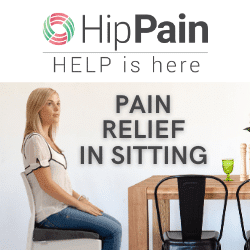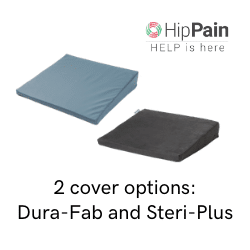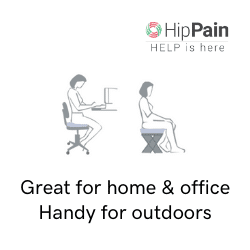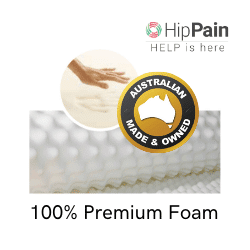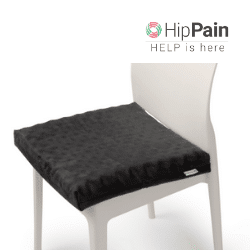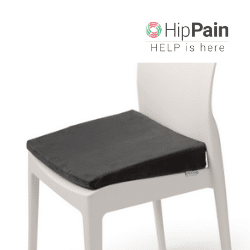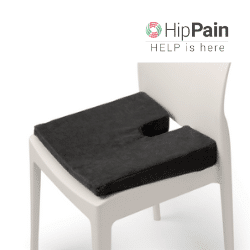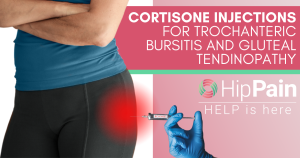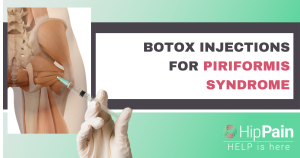Reduce hip pain in sitting by using a posture wedge cushion
Many seats, particularly lounge chairs and car seats, force a sitting posture where the knees are higher than the hips. Sitting for prolonged periods with the hips bent more that 90 degrees can irritate painful conditions at the front of the hip, such as labral tears, osteoarthritis, femoroacetabular impingement and hip flexor related pain. Sitting in this position can also irritate pain around the side of the hip associated with gluteal tendinopathy or trochanteric bursitis (greater trochanteric pain syndrome). Using a posture wedge cushion lifts the hips higher than the knees, opening the front of the hips and relieving tension around the side of the hips. For many people, this can be an excellent tool for reducing hip pain in sitting.

